Living in Hawaii means getting used to the steady breezes known as trade winds.
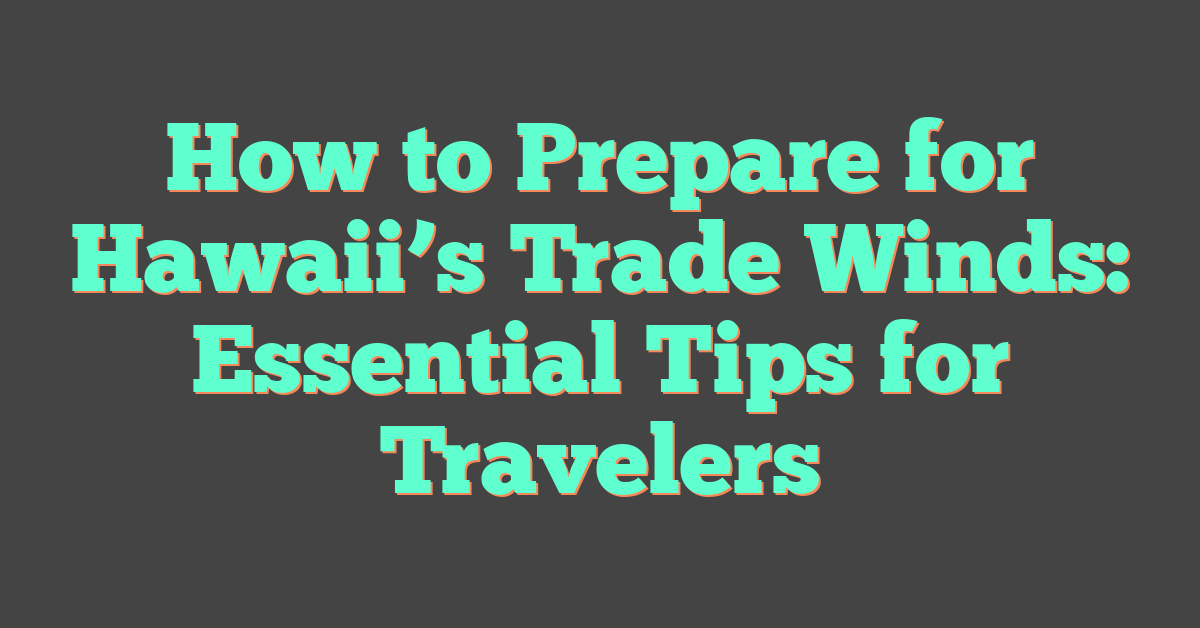
These winds are a normal part of life on the islands, but sometimes they get strong enough to affect my daily plans.
When I know how to prepare for Hawaii’s trade winds, I stay comfortable, safe, and ready for changes in the weather.
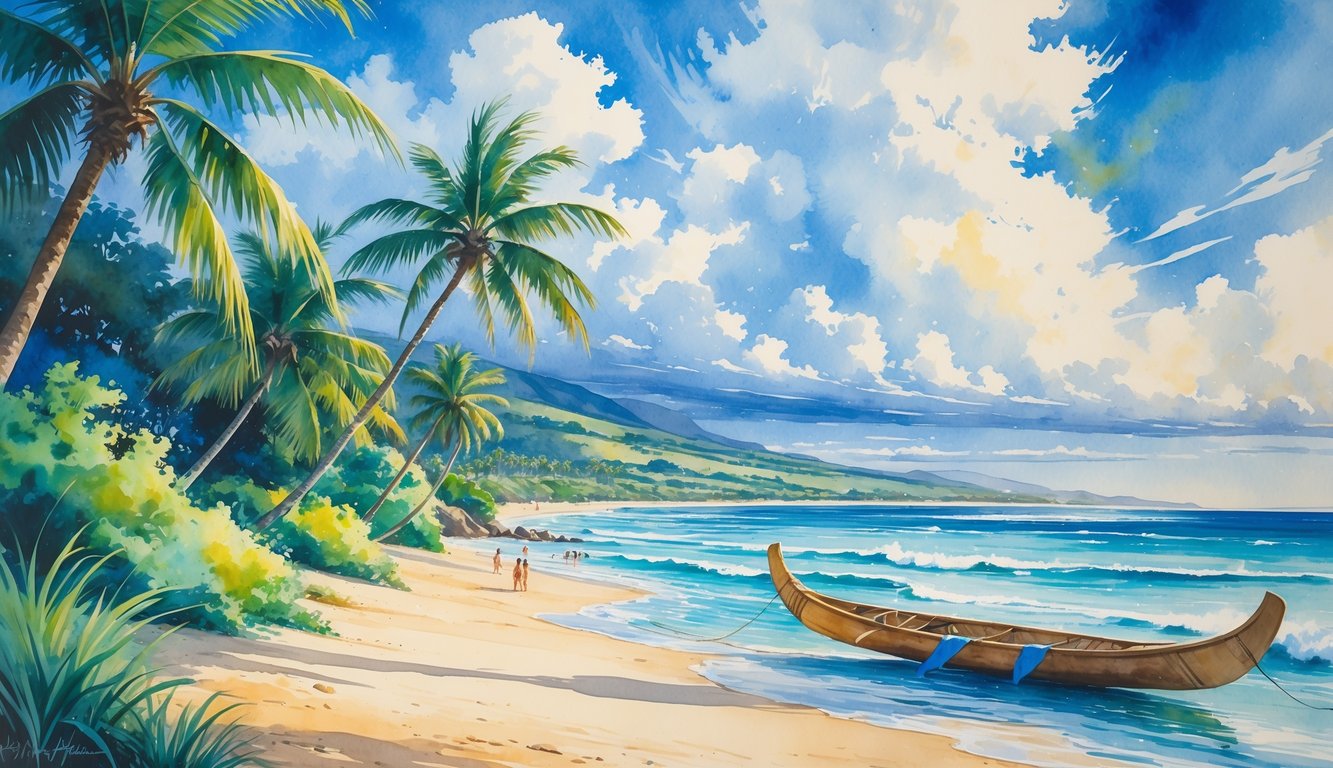
Trade winds often pick up during certain months and can quickly bring gusty conditions or even spread wildfires if I’m not careful.
I stay prepared by keeping my home in good shape and always watching the latest weather reports.
Whenever I expect stronger trade winds, I check for updates and stay alert.
If you want to be ready, you’ll find tips in this article to help you manage strong winds without worry.
Understanding Hawaii’s Trade Winds
Hawaii’s trade winds bring steady weather and help cool the tropical climate.
These winds shape daily life on each island and affect temperatures, rain, and sunshine.
What Are Trade Winds?
Trade winds are steady breezes that blow from the east or northeast across Hawaii.
I notice them throughout the year, but they are strongest and most consistent in summer.
During winter, trade winds become less frequent, happening on about 40–60% of days.
In summer, they can blow almost every day, up to 95% of the time.
These winds start in the North Pacific and move toward the equator.
They carry cooler and less humid air, which brings relief from the normally warm, humid weather on the Hawaiian islands.
Wind speeds usually stay gentle, between 10–20 mph.
Sometimes I feel stronger gusts, especially on open coasts and higher ground.
Centuries ago, trade ships used these winds to cross the oceans.
That’s why people call them “trade winds.”
Now, they are a regular feature of Hawaii’s climate.
You can learn more about what makes the trade winds unique in Hawaii by visiting this guide to trade winds.
How Trade Winds Shape Hawaii’s Climate
The trade winds help make Hawaii comfortable.
Without them, the islands would feel much hotter and stickier.
I appreciate how these winds bring cool air and keep clouds moving.
This helps prevent the air from becoming too humid.
When trade winds are active, rain often falls on the northeast mountain slopes.
The rest of the island stays drier.
Places like the windward sides of Oahu, Maui, and the Big Island get more showers and have lush green landscapes.
The steady breezes also reduce air pollution and prevent heat from building up in towns and cities.
Trade winds keep the tropical climate pleasant, especially during long stretches of summer.
They affect temperature, rainfall, and outdoor plans, from beach days to hiking trips.
You can find a deeper explanation of their climate impacts in this trade winds climate overview.
Key Differences Between Windward and Leeward Sides
The windward side of each island—facing toward the east or northeast—gets the full force of the trade winds.
This side is rainier, cooler, and features thick forests and waterfalls.
For example, Hilo on the Big Island and Hana in Maui are classic windward towns.
The steady breezes here create a lush, tropical setting.
The leeward side, which faces away from the wind, is typically drier and warmer.
Here, I notice more sunshine, fewer clouds, and less rain.
Popular leeward spots include Kihei in Maui and Waikiki in Oahu.
These areas are perfect for beaches because the skies are clearer and the winds are lighter.
This difference in wind exposure shapes where people choose to live, farm, and vacation.
If you want a quick comparison, check out this simple chart:
| Side | Main Features | Common Islands/Towns |
|---|---|---|
| Windward | Cool, wet, lush | Hilo (Big Island), Hana (Maui) |
| Leeward | Warm, dry, sunny | Kihei (Maui), Waikiki (Oahu) |
You can find more details about why these differences exist in this article about Hawaii’s wind patterns.
Seasonal Variations and Weather Impacts

Trade winds shape Hawaii’s weather all year, but the effects change by season.
Pressure systems in the North Pacific also cause shifts in rain, humidity, and temperature.
Winter Months Versus Summer Months
During the winter months (November to March), I notice the trade winds can weaken or pause.
This allows storms from the south or west to move in.
These storms bring more rain, especially to northern and eastern parts of the islands.
Rainfall is highest in winter.
The extra moisture increases humidity, and it can feel warmer at night because clouds trap heat.
In summer, stronger and steadier trade winds blow in from the northeast.
Temperatures stay around 80–88°F and humidity is lower.
The air feels fresher, and there’s less rain, especially on the leeward coasts.
Here’s a simple breakdown:
| Season | Winds | Rainfall | Humidity |
|---|---|---|---|
| Winter | Weaker | High (Nov–March) | Higher |
| Summer | Stronger | Lower (May–Oct) | Lower |
If I want to avoid wet weather, I plan trips during late spring or summer.
You can learn more about these seasonal weather patterns in the climate guide for Hawaii.
The Role of High-Pressure and Low-Pressure Systems
High-pressure systems in the North Pacific push the trade winds toward Hawaii.
When high pressure is strong, the winds stay steady and help keep the weather dry and comfortable.
These systems dominate in summer, blocking storms and keeping the air cool and breezy.
Low-pressure systems have a different effect.
When a low-pressure area comes close, especially in winter, it can disrupt the trade winds.
This lets storms move in from the south or west, bringing more clouds, higher humidity, and heavy rainfall.
These periods can feel muggy or stormy.
By knowing how high and low-pressure systems affect the islands, I can better prepare for quick changes in weather, especially if I plan outdoor activities.
For more details, the National Weather Service has a summary of Hawaii’s climate.
Influence on Local Environments
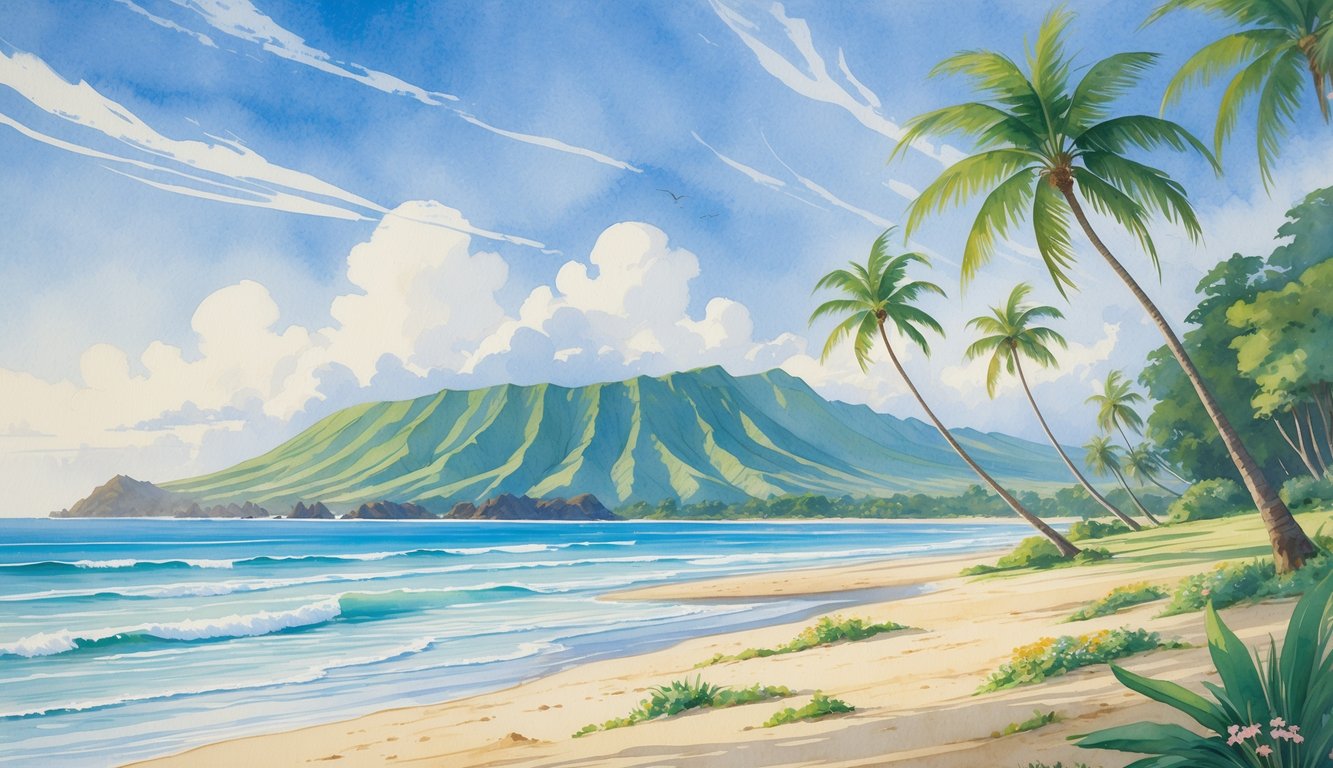
Hawaii’s trade winds shape the weather and land in important ways.
These steady winds affect how plants grow, how often it rains, and how fires can spread across the islands.
Vegetation and Drought Risk
Trade winds bring moist air from the ocean.
As this air rises over the mountains, it cools and forms clouds, making rain fall mostly on the windward sides.
That’s why I see lush green forests and lots of plant life on those slopes.
On the leeward sides, the mountains create a rain shadow.
This means the air is drier and plants there must handle less water.
I often find dry grass, hardy shrubs, and more bare land on this side.
Key points to remember:
- Windward slopes: More rainfall, dense forests, and many types of plants
- Leeward slopes: Dry climate, sparse vegetation, and increased risk of drought
When droughts happen, grasses and other dry plants become flammable.
This raises the chance for wildfires, especially when strong winds pick up dried leaves or ash from past fires.
This risk is higher in the areas that get less rain from the trade winds.
For more on how rainfall patterns influence the islands, see trade wind rain and moisture effects.
Impact on Lahaina and the Leeward Regions
In Lahaina and other leeward places, I notice that the lack of steady rain means I often deal with dry, hot weather.
These conditions dry out the soil and local plants quickly.
During strong wind events, flammable materials like dry grass or dead shrubs can catch fire easily.
It’s even riskier if there’s ash left over from older fires, which the wind can blow into new areas.
In these parts, wildfires can move quickly and threaten homes and neighborhoods.
A quick list of fire risks here:
- Dry grasses and shrubs
- Hot, windy weather
- Leftover ash from past wildfires
- Ignition sources, such as power lines or careless burning
Trade winds can also make fires spread faster and farther.
This can create a cycle where burned areas recover slowly due to less rain.
Lahaina and the leeward sides show how important it is to manage these risks and use fire-safe landscaping to protect homes.
For more details, check the information on trade wind patterns over different regions of Hawaii.
Staying Safe During Strong Trade Winds
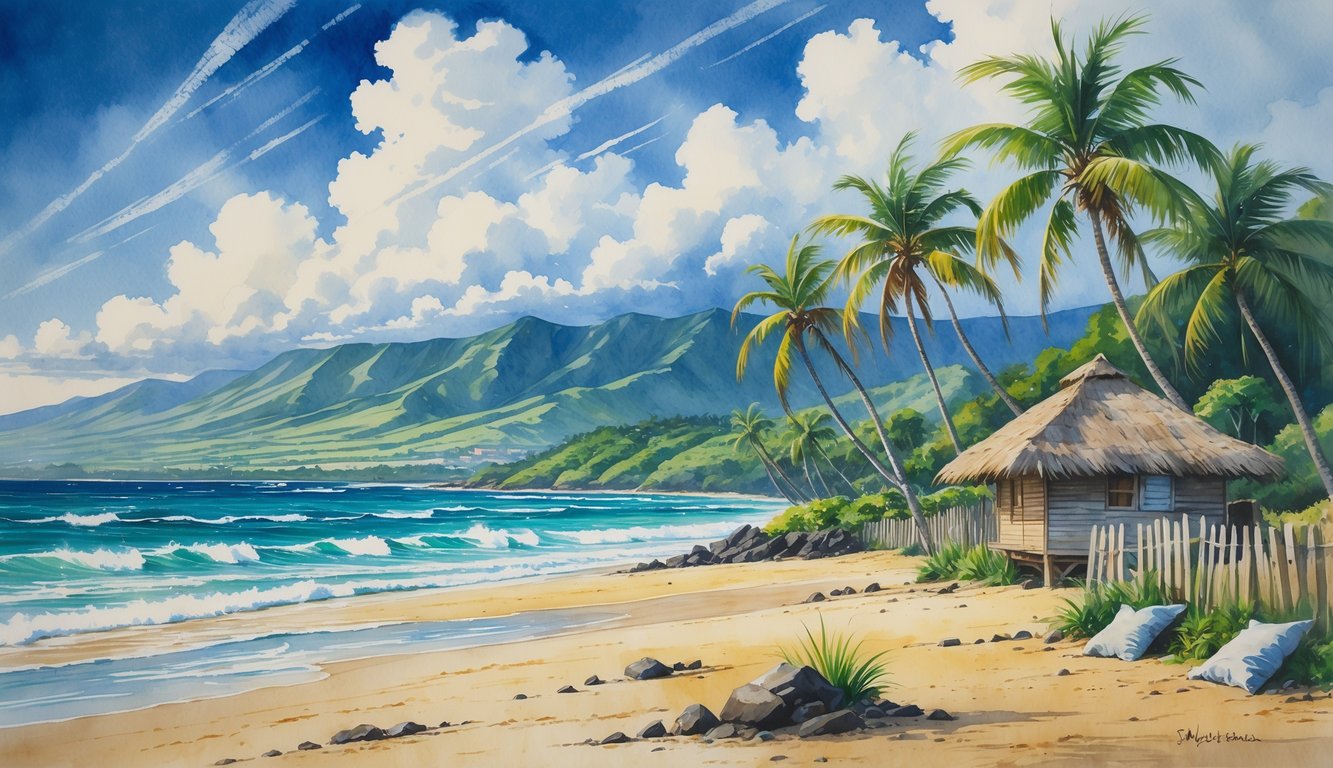
When the trade winds pick up in Hawaii, I stay safe by planning ahead.
I need to know my safest escape paths and have what I need on hand, especially since strong winds can turn small problems like wildfires or falling debris into real dangers.
Evacuation Routes and Emergency Supplies
I always check local maps for my nearest evacuation routes.
Knowing these routes helps me leave quickly if my home becomes unsafe due to wind damage or a nearby wildfire.
I make sure everyone in my family knows where to meet if we get separated.
For emergency supplies, I keep an easy-to-carry “go bag” ready.
Mine includes:
- Water (at least one gallon per person per day)
- Non-perishable food and snacks
- Flashlights and extra batteries
- First aid kit
- Copies of my important documents
- A portable phone charger
I also secure outdoor items, such as patio furniture and tools, because strong winds can turn them into hazards.
If I live in a mobile home, I have a safer place picked out in advance where I can shelter when the winds are dangerous, just as the National Weather Service recommends.
Mitigating Risk From Wildfires
I keep my yard free from dry leaves and other flammable materials because strong winds can help a wildfire spread fast.
I do not store firewood, propane tanks, or any flammable liquids close to my house.
If there is a wildfire nearby, I close all doors and windows to keep out smoke and ash.
I also listen for updates from officials and prepare to leave if I am told to evacuate.
During dry, windy weather, I avoid using outdoor grills or starting any open flames.
Trade winds in Hawaii can spread wildfires quickly, especially during the dry months.
I take extra steps to protect my home as wildfire conditions are more likely during this time.
Being prepared helps me stay safe and calm when strong winds blow through.
Unique Wind Events: Kona Winds and Vog
On the Big Island, strong or changing winds can affect daily life in many ways. Sometimes, these winds bring volcanic haze that changes how I feel or what activities I choose.
What Are Kona Winds?
Kona winds are different from Hawaii’s usual trade winds. Most of the time, cool northeast winds blow across the islands.
Sometimes, the wind shifts and comes from the south or southwest. We call these Kona winds.
Kona winds bring warmer and more humid air. They often replace the cooler, drier trade winds for several days.
During these times, my area feels stickier and less comfortable, especially at lower elevations. Kona winds push air from the ocean toward the land.
This shift can change weather patterns. Sudden rain showers often hit the island’s western (leeward) side.
On the Big Island, these winds sometimes carry volcanic gases and haze across places like Kona and up toward Mauna Kea’s slopes. The change in wind direction affects air quality and visibility.
I pay attention to local weather updates when Kona winds are expected. For more about these winds, check out this wind event guide.
Understanding Vog and Its Hazards
Vog means volcanic smog—a mix of gases and tiny particles from volcanoes, especially Kīlauea. Strong trade winds usually push vog away from populated areas.
When Kona winds blow, vog can drift toward western parts of the island, including the Kona coast. Breathing in vog can feel uncomfortable, especially for people with asthma or breathing issues.
Common symptoms include sore throats, headaches, watery eyes, and coughing. During heavy vog days, the air looks hazy and visibility drops.
People with health concerns should limit outdoor activities and close windows. Some areas north of Kailua-Kona and up toward Mauna Kea are sometimes less affected by vog.
The wind’s direction and speed make a big difference. Meteorologists watch these changes closely.
I check air quality forecasts before planning outdoor activities. You can learn more about vog in Hawaii by visiting this detailed vog guide.
Outdoor Activities and Trade Winds
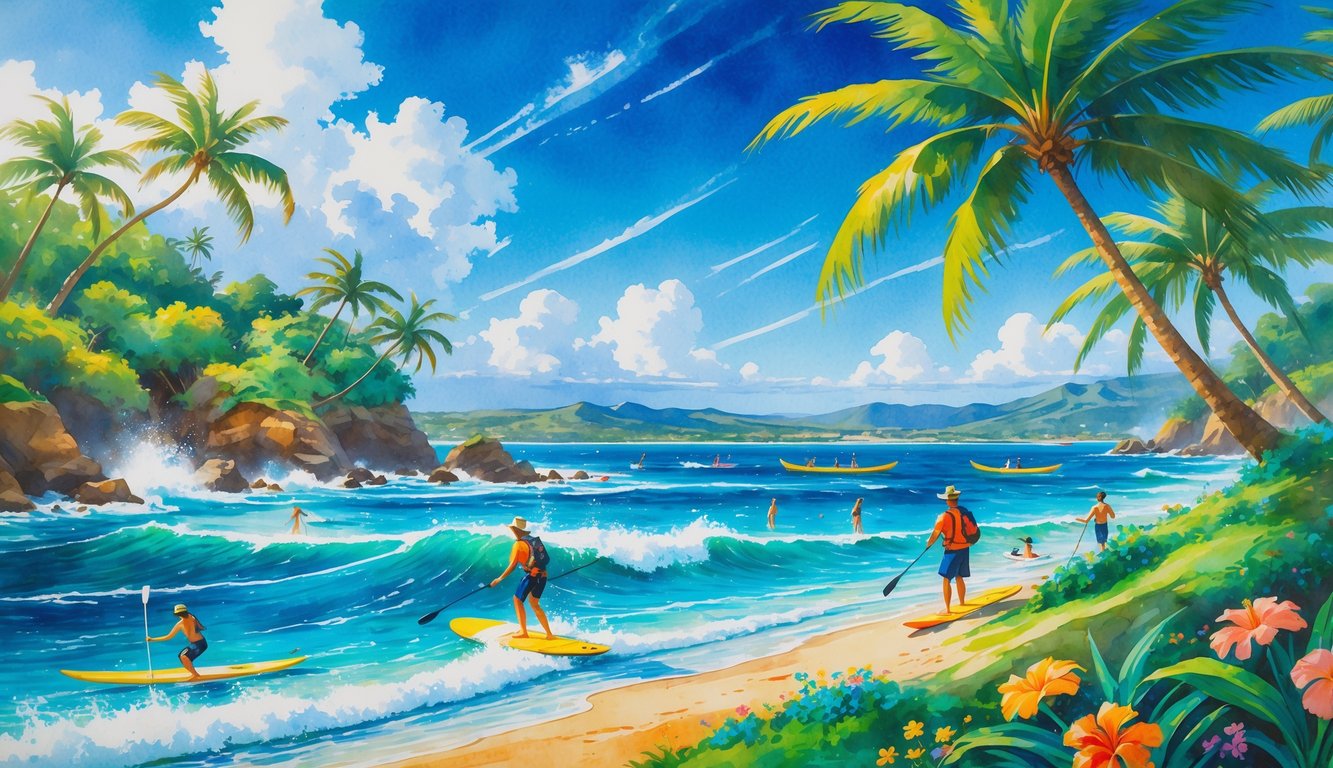
Trade winds shape how I enjoy outdoor activities in Hawaii. I pay attention to wind direction and strength when planning water sports or trips to the beach and mountains.
Tips for Windsurfing and Water Sports
Maui is known as the windsurfing capital. The steady northeast trade winds make beaches like Kanaha and Ho‘okipa perfect for catching big waves and steady breezes.
I check wind reports before heading out, since trade winds can change speed during the day. I wear gear that keeps me safe, like life jackets and reef shoes.
I watch out for nearby boats, swimmers, and coral reefs to avoid accidents. On Oahu and the Big Island, the Pacific Ocean can be choppier on windward shores where trade winds are strongest.
It’s smart to choose spots with lifeguards and safety signs. If I’m new to water sports, I stick to areas where schools offer lessons and rental shops have beginner-friendly boards.
Waterproof sunscreen and a snug rash guard help make a long day outdoors more comfortable.
Best Practices for Beaches and Hiking
Trade winds often bring cool breezes to Hawaii’s beaches. They also stir up sand and cause choppy surf.
I use a sturdy beach umbrella. I secure all my belongings, since winds can blow towels or bags away.
When I hike on windy days, I choose trails on the leeward side of the islands. Trails on the windward coast—like some on Oahu and the Big Island—often face strong gusts.
I pack layers and wear a hat with a chin strap. I also bring plenty of water.
High winds can knock loose branches and make paths slippery. I avoid narrow or cliffside trails when the wind gets too strong.
I check official weather updates and alert systems before I head out for a hike or beach day.




